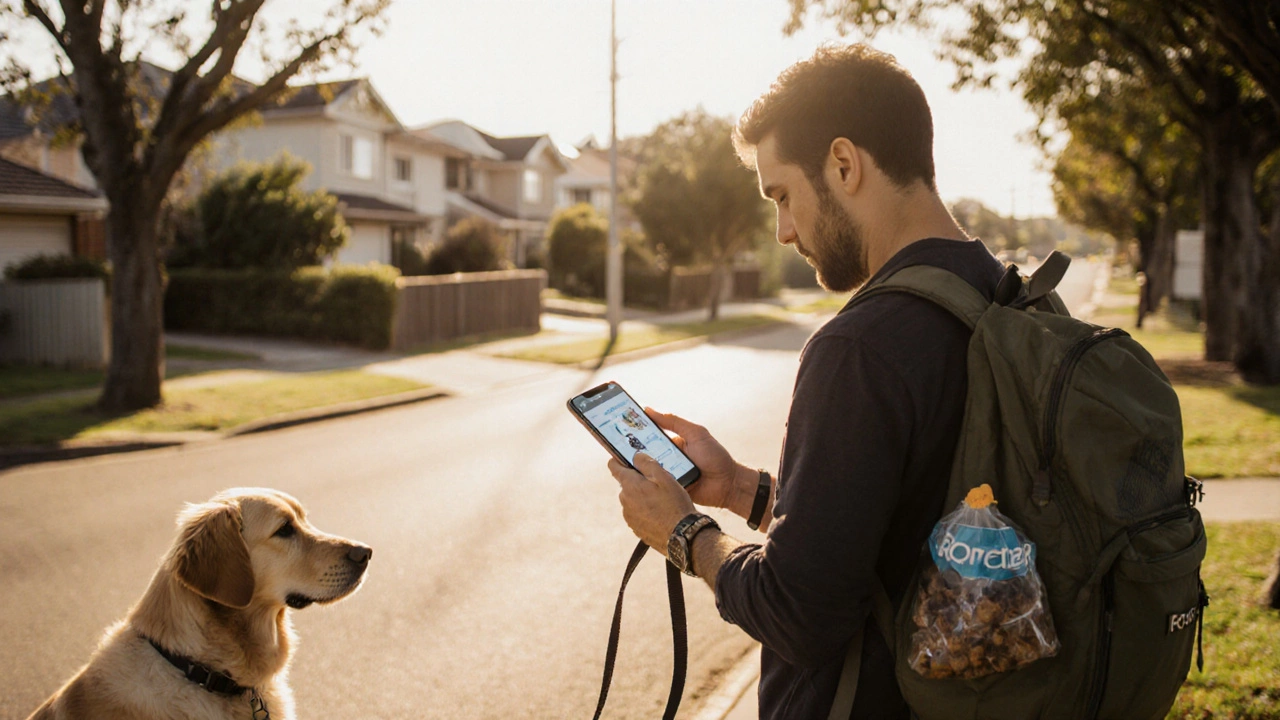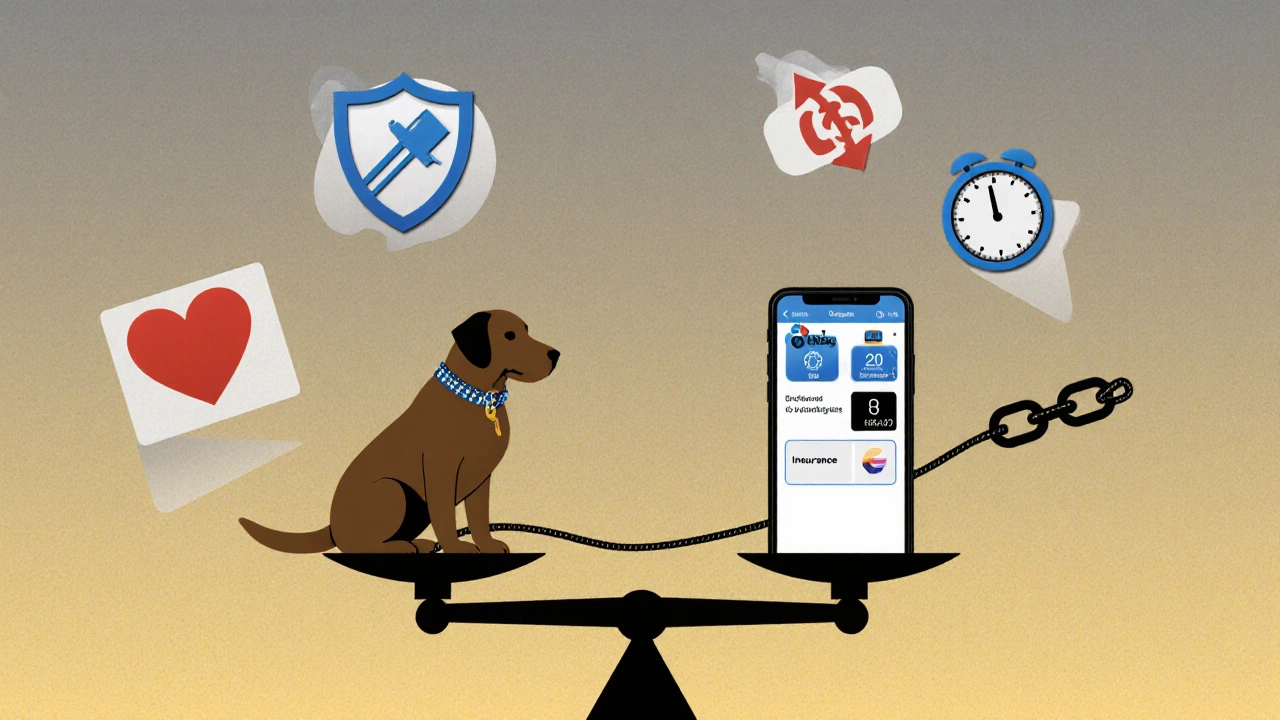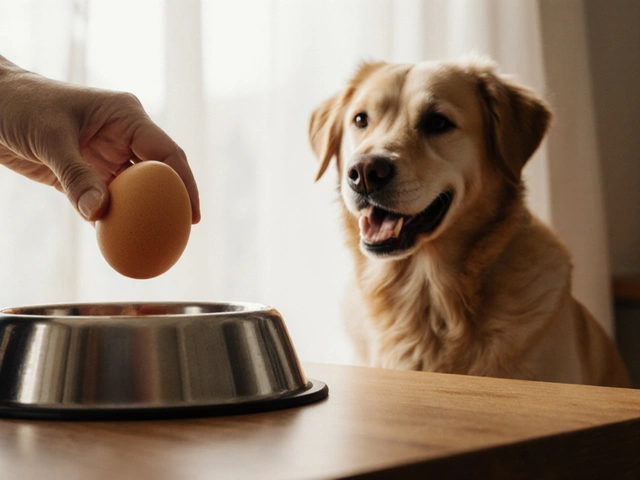
Dog Walking Earnings Calculator
Your Walk Details
Earnings Comparison
Rover Earnings
Commission: 20%
Your Take Home: $17.60
Hourly Rate: $52.80
Wag Earnings
Commission: 40%
Your Take Home: $25.00
Hourly Rate: $25.00
Important Considerations
Wag often sends walks that are far away. For a 4.3 km walk, you might lose $7 in fuel costs. This means you could be making less than $10 per walk even if Wag shows $25.
Also remember: Rover lets you set your own rates and keep more of your earnings. With Wag, your rate is fixed at $15 for 20 minutes, $20 for 30 minutes, and $25 for 60 minutes.
If you’re thinking about becoming a dog walker, you’ve probably seen ads for Rover and Wag. Both apps promise flexible hours, easy sign-up, and cash in your pocket after every walk. But which one actually pays better, treats walkers fairly, and keeps the stress low? It’s not just about who offers more walks-it’s about who treats you like a real person, not just another gig.
Pay Structure: What You Really Take Home
Rover lets walkers set their own rates. You decide if you want to charge $15 for a 30-minute walk or $25 for an hour. That sounds great, right? But here’s the catch: if your price is too high, you get fewer bookings. If it’s too low, you’re working for pennies. Most walkers in Auckland settle between $18 and $22 per walk. Rover takes a 20% commission on each booking.
Wag doesn’t let you set your own rates. They pay you a flat $15 for a 20-minute walk, $20 for 30 minutes, and $25 for an hour. Sounds simple-but there’s a hidden cost. Wag takes 40% of what the pet owner pays. That means if a customer pays $40 for an hour-long walk, you only get $25, and Wag pockets $15. For the same amount of time, you’re making less than you would on Rover.
Real example: I walked a golden retriever for 45 minutes last week. On Rover, I charged $22. I kept $17.60. On Wag, I’d have gotten $20-but only because Wag set the price. I didn’t earn more because I worked harder. I earned less because the app took a bigger cut.
Booking Consistency: Will You Actually Work Every Week?
Rover’s algorithm favors walkers with high ratings, quick response times, and lots of experience. If you’ve been on the app for six months and have 40 five-star reviews, you’ll get booked solid. But if you’re new? You might go days without a single request. I went two weeks without a walk when I first joined. That’s not unusual.
Wag uses a different system. They push walks to you based on proximity and availability. You get push notifications like a food delivery app. But here’s the problem: they often send you walks that are too far away. I once got a notification for a walk 4.3 kilometers from my house. By the time I got there, I’d spent $7 in fuel and 25 minutes just driving. The walk paid $15. Net profit? $8. That’s not a job-it’s a gas money loss.
On Rover, most clients book in advance. You know exactly when you’re working. On Wag, you’re always waiting for the next ping. That makes planning your day impossible. If you have another job, kids, or even just need to drop off groceries, Wag’s chaos doesn’t fit.

Customer Communication: Are You Treated Like a Professional?
Rover gives you a dedicated chat with each client. You can send photos, ask about food allergies, share updates about behavior, and even schedule recurring walks. I’ve had clients who send me a list of their dog’s favorite treats and a note saying, “Thanks for being so patient with Baxter.” That kind of connection matters.
Wag’s app is all business. No photos allowed during walks. No messaging beyond a quick check-in. You’re told to follow a script: “Walked dog. Returned home. Dog seemed happy.” That’s it. No room for personality. No way to build trust. One client left a one-star review because I didn’t text them every 10 minutes. But Wag doesn’t even let you send photos. You’re stuck following rules that don’t match real dog care.
Insurance and Safety: Who’s Looking Out for You?
Rover offers $1 million in liability insurance for walkers. That covers you if a dog gets injured or causes damage while you’re walking it. You also get access to a 24/7 support line. I had a dog bolt during a walk last spring. I called Rover’s support line. They connected me with a vet clinic nearby and helped me file a claim within an hour. No red tape.
Wag also offers insurance-but it’s harder to use. You have to report incidents within 24 hours, and they require photos, videos, and a written statement. One walker I know had a dog bite her hand. She submitted everything on time. Wag denied the claim because the dog’s owner didn’t sign off on the incident report. You’re left holding the bag.
On Rover, background checks are done by a third party. On Wag, they use a cheaper service that misses some red flags. I’ve heard stories of walkers being assigned to homes where dogs have a history of aggression-and no warning was given.

Flexibility vs Control: Who Lets You Run Your Own Business?
On Rover, you’re an independent contractor. You choose your hours, your routes, your clients. You can say no to a walk if you’re tired or busy. You can block out days when you don’t want to work. You even get to pick which neighborhoods you serve. I only take walks in my own suburb because I know the streets, the traffic, and the dog parks. That’s not an option on Wag.
Wag treats you like a delivery driver. You can’t choose your clients. You can’t pick your walks. You can’t even cancel a scheduled walk without losing your rating. If you miss a walk because your car broke down, you get penalized. No exceptions. No mercy.
Rover lets you build a profile. You upload photos of yourself walking dogs. You write a bio. You list your experience with different breeds. Clients choose you because they like you. On Wag, you’re just a name on a map.
Bottom Line: Who Should You Choose?
If you want steady income, control over your schedule, and the chance to build real relationships with pet owners-go with Rover. It takes longer to get started, but once you have a few solid reviews, the walks come in consistently. You earn more per walk. You’re treated like a professional. You’re covered if something goes wrong.
If you just want quick cash and don’t mind unpredictable hours, low pay, and zero control-Wag might seem tempting. But after a few weeks, you’ll realize you’re working harder for less, with no safety net and no respect.
One more thing: don’t just pick one and stick with it. Try both for a month. See which one fits your life. But if you’re serious about making this a real side hustle-or even a full-time job-Rover is the only app that lets you grow.
Which app pays more for dog walkers: Rover or Wag?
Rover pays more in the long run. Walkers set their own rates and keep 80% of what clients pay. Wag pays fixed rates but takes 40% of the client’s payment. For a one-hour walk, a Rover walker might earn $20-$25, while a Wag walker gets $25-but only because Wag sets the price. On average, Rover walkers make 25-40% more per hour after fees.
Can I work for both Rover and Wag at the same time?
Yes, you can work for both apps at the same time. Many walkers do. They use Rover for regular clients and Wag for last-minute walks. But be careful: Wag’s app sends notifications that can conflict with your Rover schedule. You’ll need good time management and a reliable phone calendar.
Do I need a car to walk dogs on these apps?
No, you don’t need a car. Many walkers use bikes, scooters, or just walk. But if you live in a spread-out area like Auckland’s suburbs, having a car gives you access to more clients. Wag often sends walks that are too far to walk to. Rover lets you filter by distance, so you can avoid long drives.
Which app has better safety features for dog walkers?
Rover has better safety features. They offer $1 million in liability insurance, 24/7 support, and detailed client profiles that include dog behavior notes. Wag’s insurance is harder to claim, and they don’t always warn walkers about aggressive dogs. Rover also lets you see a dog’s history before accepting a walk.
How long does it take to start earning on Rover or Wag?
You can start walking within 2-3 days on both apps after background checks. But earning consistently takes longer. On Rover, it usually takes 3-6 weeks to build up enough reviews to get booked regularly. On Wag, you might get walks faster, but they’re often short, low-paying, and far away.
Are there hidden fees with either app?
Rover charges a 20% service fee on each booking. Wag charges a 40% fee, but it’s hidden in their pricing. Neither charges monthly fees, but Wag sometimes deducts money for “service adjustments” if a client complains. Rover doesn’t do that. Always check your payout details before accepting a walk.
If you’re thinking about this as a side hustle, start with Rover. Build your reputation. Learn the ropes. Once you have a solid client base, you can add Wag for overflow. But don’t start with Wag if you want to make this sustainable. It’s not a job-it’s a grind.








Write a comment